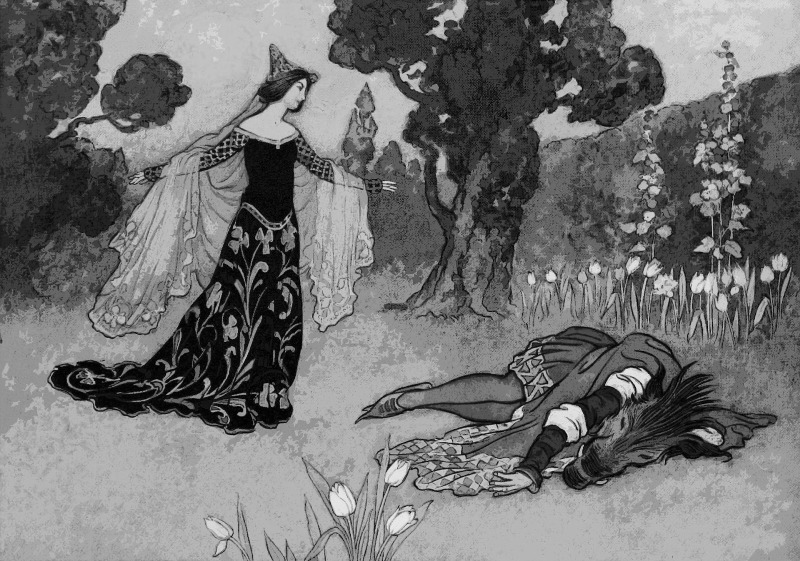Narrative is a concept used in literary criticism and cultural studies to describe a story or narrative that conveys a sequence of events. Narrative can occur in various art forms, such as literature, film, and theater, as well as in media, interactive and social platforms. Narratives play a significant role in shaping cultural values and beliefs, and are also used in historical and political contexts to interpret past events and contemporary issues.
What is NARRATIVE – concept and definition in simple words.
In simple terms, a Narrative is a story that lays out events in a particular sequence.
Imagine telling your friend about the adventures you had while vacationing at sea. This is a narrative! Narratives can be found in books, movies, plays, and even in everyday communication. The main parts of a narrative include plot (what exactly happened), characters (the people or other creatures involved in the story), setting (where the story takes place), and theme (the main idea or subtext of the story). Narratives help us to understand the world around us, identify shared values and experiences, and provide us with pleasure.

Examples of narratives: the diversity of stories in literature, film, and other media.
Narratives can be found in a variety of creative works, from classic literature such as novels and short stories to contemporary films and TV series. Here are some examples of narratives in different media:
Literature
- The Witcher by Andrzej Sapkowski: a series of fantasy novels about the witch Geralt of Rivia, who is engaged in the extermination of monsters in a fictional world.
- 1984 by George Orwell: a dystopian novel describing life in a totalitarian society where the thoughts and actions of citizens are controlled by Big Brother.
- Harry Potter by J.K. Rowling: a series of novels about a young wizard Harry Potter who discovers his gift and studies magic at Hogwarts School.
- Game of Thrones by George Martin: a fantasy series of novels describing the power struggle and intrigue between noble families in Westeros.
- The Three Comrades by Erich Maria Remarque: a novel about the fate of three friends who are looking for their place in life after experiencing the horrors and losses of the Great War.
Film
- Leon by Luc Besson: a film about a professional hitman, Leon, who lives a lonely life but finds himself as a guardian for 12-year-old Matilda, whose parents were killed by corrupt police officers.
- Peter Jackson’s The Lord of the Rings: a film adaptation of J.R.R. Tolkien’s epic trilogy about the journey of Frodo Baggins and his companions to destroy the Almighty Ring.
- One Flew Over the Cuckoo’s Nest by Milos Forman: an adaptation of Ken Kesey’s novel about the lives of patients in a psychiatric hospital and the struggle against the institution.
- The Iron Lady by Phyllida Lloyd: a biopic about the life and career of Margaret Thatcher, the first female prime minister of the United Kingdom.
- Amelie by Jean-Pierre Jeunet: a French comedy about a young woman who discovers the joy of life by helping other people find happiness.
Theater
- Johann Strauss’s “Vienna Blood”: an operetta that recreates the atmosphere of a Viennese ball, where the love story between Countess Gabrielle and Captain Zoltan unfolds.
- Batman: Way of the Winner: a modern theatrical production in which Batman comic book characters find themselves in the center of a fascinating story about fighting crime and superheroes.
- Romeo and Juliet by William Shakespeare: a classic tragedy about the love of two young people from hostile families who cannot be together because of old disputes and misunderstandings.
Animation
- The Walking Castle by Hayao Miyazaki: Japanese anime about a girl Sophie who finds herself under the spell of an evil witch and works with the wizard Howl to find a way to restore her youth.
- Brave by Mark Andrews and Brenda Chapman: a Disney animated fairy tale about a young princess Merida who fights for her freedom and her own path in life, fighting against the traditions and customs of her wild country.
- WALL-E by Andrew Stanton: a witty animated film about a lonely robot, WALL-E, who has been cleaning the Earth for years until he meets a robot named EVE and goes on a space adventure with her.
Music
- Bohemian Rhapsody by Queen: a legendary rock opera that combines classical music, rock and roll and opera singing in a breathtaking work that tells the story of the desperate struggle for life, love, and creativity.
- Don Giovanni by Wolfgang Amadeus Mozart: a famous opera that tells the story of a rebellious heartthrob, his conquest of women and overcoming obstacles on the way to true love.
Video games
- “The Last of Us” by Naughty Dog: an exciting adventure game about Joel and Ellie who are fighting for survival in a world engulfed by a pandemic and cruel humanity.
- Red Dead Redemption 2 by Rockstar Games: an epic western adventure game where the player experiences the life and adventures of gang member Arthur Morgan in preparation for the era of modernity in late 19th century America.
- Life is Strange by Dontnod Entertainment: an interactive narrative project in which the player controls Max Caulfield, a photography student who discovers her ability to manipulate time and influence the course of events in her life and the lives of others.
Visual art
- “Solar Travels” by Alexandre Dumas: a series of paintings dedicated to traveling around the world, in which the artist depicts bright colors and emotional impressions of visiting different countries.
- “The Mysterious Garden” by Georgia O’Keeffe: a series of paintings in which the American artist depicts fragments of nature and vegetation, giving them a mysterious, mystical look that encourages the viewer to reflect on the hidden corners of nature and its charm.
Advertising
- “1984” for Apple: a historical ad created by Ridley Scott that reflects a dystopian world that treats technology and innovation as a means of controlling humanity, but Apple represents an alternative and hope for freedom.
- “The Man Your Man Could Smell Like” for Old Spice: an original and humorous ad in which the main character performs incredible stunts and poses in different scenarios, demonstrating how Old Spice can make any man irresistible.
- “Coca-Cola Happiness Factory”: an animated commercial depicting a fantasy world inside a Coca-Cola vending machine, where various magical creatures and machines work to create happiness for drinkers.

Narrative techniques: narrative methods and their impact on the perception of a story.
There are many narrative techniques that are used to create a unique narrative style. Here are some of them:
- First narrative mode: first-person narration, when a character tells his or her story.
- Third narrative mode: a third-person narrative where the narrator tells the story from a certain distance.
- Narrator: a storyteller who knows all the details about the characters and events, even those that the characters themselves do not know.
- Linear narrative: A sequential telling of a story from beginning to end that follows a temporal sequence of events.
- Non-linear narrative: telling a story without following a temporal sequence, including the use of elements such as flashbacks, flash-forwards, and parallel plots.
- Collage narrative: A story that consists of different segments that can be presented in different styles, perspectives, or techniques.
- Episodic narrative: a story that consists of separate episodes or situations that are combined into one overall story.
- Repeated narrative: A story that is told several times from different perspectives or with different emphases on events.
- Internal narrative: a story that reflects the thinking and perception of characters in the form of their internal dialog and monologue.
- Frame narrative: a story that includes one or more other stories told by characters in the main narrative.
- Mixed Perspective: A narrative technique that involves shifting points of view between different characters, providing different perspectives on events and situations.
- Antiheroic (antagonistic) narrative: a story in which the main character is not a traditional hero (protagonist), has flaws, contradictions, and does not always act morally or correctly.
- Allegorical narrative: a story in which the characters, events, and circumstances are symbolic, reflecting more general ideas, moral or philosophical issues. Allegories can be used to present complex ideas or issues in a more understandable and accessible way.
All of these narrative techniques are used in literature, film, theater, and other art forms to create diverse and engaging narratives. The choice of a particular technique depends on the idea of the work, the author’s style, and the needs of the audience. For example, a non-linear narrative can help create the effect of surprise and mystery, but at the same time can be more difficult to understand than a linear narrative. The use of different narrative techniques makes it possible to create unique and original works that reflect timeless and relevant themes of human life and experience.

Types of narratives: different categories of stories.
Narratives can be categorized according to different criteria, here are some of the main types of narratives:
- Mythological narrative: stories that are based on myths, legends, and folklore, often reflecting religious or cultural beliefs about the world, human life, and supernatural forces.
- Biographical narrative: stories based on real life events and experiences of individuals, told in the first or third person, focusing on significant moments in the characters’ lives.
- Psychological narrative: stories that focus on the psychological state of characters, their internal conflicts, emotions, and character development.
- Detective narrative: stories that involve solving a mystery, crime, or secret, where the main character plays the role of a detective, police officer, or amateur investigator.
- Fantasy narrative: stories that take place in unrealistic, fictional worlds or contain supernatural elements, magic, or unusual characters.
- Science fiction narrative: stories based on scientific ideas, inventions, technologies, and their potential impact on the future of humanity or on other worlds. These narratives may include elements of space travel, time manipulation, and encounters with alien civilizations.
- Epic narrative: narratives on a large scale that take place over a long period of time or involve a large number of characters. Epic narratives often focus on historical events, power struggles, and great heroic deeds.
- Parodic narrative: stories that use humor and satire to ridicule other works, genres, styles, authors, or social phenomena. Parody narratives can reflect both certain clichés and general trends in art and culture.
- Adventure narrative: stories that focus on the adventures, journeys, and trials of the protagonists, often in remote, exotic, and dangerous places. Adventure narratives can include elements of fighting evil, romance, and the discovery of unknown territories.
- Dystopian narrative: stories that tell of dystopian worlds where human freedom, happiness, and harmony are severely limited or absent due to totalitarian regimes, environmental disasters, or technological control.
Impact on society: The role of narrative in society.
- Shaping cultural values and beliefs: Narratives play an important role in society by shaping and reflecting cultural values and beliefs. Through narratives, we perceive and understand the world around us, learn moral principles and social norms. Literary works, films, and other art forms reflect the spirit of their time and shape the worldview of future generations.
- Promote empathy and understanding between different communities: Narratives also have a powerful impact on empathy and understanding between people of different cultural and social backgrounds. By reading or watching works that tell the story of other people, their experiences and trials, we learn to empathize, to understand other people’s problems and to find common ground. In this way, narratives promote cultural exchange, tolerance and intercultural dialogue.

What is a political narrative and its role in the political struggle for power?
In simple terms, a political narrative is a story or narrative that has a political meaning and is used to convey certain ideas, beliefs, or values. It can be used as a means of influencing public opinion, manipulating consciousness and shaping political decisions.
The use of narrative in political discourse and struggle.
Political narratives play an important role in the political life of society. They help politicians argue their positions, evoke emotional reactions from voters, and influence decisions made at various levels of government. They also serve to spread ideologies, build a social base, and strengthen political power.
The role of narratives in shaping public opinion and influencing political decisions.
Narratives can have a significant impact on public opinion by promoting a certain perception of events, facts, and characters. They can determine how people perceive and evaluate political processes and actors. In turn, this influences the formation of political preferences, the choice of representatives, and the adoption of laws and regulations.

What is the Grand Narrative: shaping our worldview?
In simple terms, a Grand Narrative is a comprehensive, universal story that attempts to explain significant events and phenomena in human history and reflects the core values and beliefs of a particular culture or society. Grand narratives play a key role in shaping our perception of the world, history, and social processes.
The importance and implications of Grand Narratives in shaping our understanding of history and society.
Grand narratives are essential for individuals to understand their identity, place in history, and role in society. They influence our vision of the past, present, and future, and shape our values, beliefs, and guidelines. However, Grand Narratives can also have negative consequences, for example, when they are used to reinforce ideologies, manipulate consciousness, and support the dominance of certain groups or interests. Understanding the impact of grand narratives on our worldview can help us to be critical and reflective about how we perceive reality and shape our thoughts and attitudes.
Historical and Political Narratives: Interpreting the Past and the Present
- The role of historical narrative in preserving and interpreting past events: Historical narrative plays an important role in transmitting knowledge about past events and phenomena. It helps to preserve collective memory, shape the identity of a nation, and promote cultural heritage. At the same time, historical narratives can be subjective, as different historians can interpret the same events in different ways based on their own beliefs, views, and interests.
- The creation and influence of political narratives on contemporary issues and debates: Political narratives play an important role in shaping public opinion by influencing how society perceives current issues and problems. They are created by political actors to mobilize support, argue their positions, and influence decisions. Political narratives can have both a positive and negative impact on society, depending on their content, goals, and how they are used. Understanding how political narratives are shaped and operate can help citizens to be more critical and responsible in their political choices and attitudes towards contemporary issues and debates.

What is narrative psychology?
In simple terms, Narrative Psychology is a field of psychology that studies the role of narratives in shaping our perception of ourselves, other people, and the world around us.
It is based on the premise that people structure their experiences and communication through narratives – stories that have a beginning, middle, and end. Narrative psychology explores how we use narratives to give meaning to events in our lives, develop self-knowledge, and interact with others.

Creating Engaging Narratives: Tips and Techniques.
- Practical tips for creating engaging and effective narratives: To create an engaging narrative, authors should focus on developing an intriguing storyline, developing characters, and creating vivid imagery. Useful techniques can include the use of flashbacks, dialog exchange, and different points of view to keep the reader engaged.
- The importance of pacing, character development, and conflict resolution in a story: Story pacing, character development, and conflict resolution are key to creating an effective narrative. Pacing allows you to control the tension and emotional mood of the story, providing a balanced rhythm and engaging the reader. Character development creates an emotional connection with the reader, helping them to empathize with the characters. Resolving conflict is an important element of storytelling that helps provide a satisfying conclusion and reinforces the experience.
Applying these tips and techniques will help authors create engaging and emotionally rich narratives that will capture readers’ attention and leave them with a lasting impression.
Conclusion.
To summarize, narrative is of great importance in human culture and expression. It helps us understand the world, empathize with different characters, and reveal our own experiences. Through narrative, we learn to accept different points of view and create emotional connections with other people.

FAQ (Frequently Asked Questions):
A narrative is a story or narrative that contains a sequence of events that is reproduced through various art forms, such as literature, film, theater, etc.
A grand narrative is an overarching story or concept that explains broad aspects of a society or history and has a significant impact on people’s perceptions and understanding.
A historical narrative is a story that tells about past events, their context, and consequences, helping to transmit and preserve historical memory.
A political narrative is a way of presenting political events and ideas through storytelling that influences public opinion and shapes political decisions.
Narrative analysis is a research method that focuses on the study of narratives, their structures, themes and motifs, as well as the interaction between the storyteller and the audience.
Narrative is important to people because it helps them understand the world around them, communicate knowledge and experience, express emotions and values, and foster understanding and empathy between different cultures and communities.




